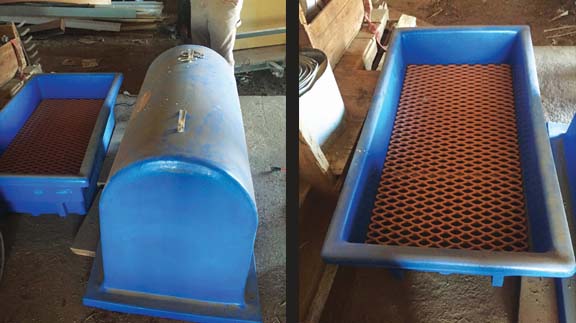Farm & Ranch
Meanwhile, back at the ranch….

By Rayford Pullen, [email protected]
Now that we have the bulk of our calving behind us here in North Texas, our thoughts turn to doing what is best to get the most profitable return from those calves that are running rampant across the pasture and reminding us of the youthfulness we once possessed.
When calves are between two and three months old, we can begin our vaccination program and expect to get good immunity. This is also when we will be controlling internal parasites in our calves and first-calf heifers. We haven’t always dewormed our calves when they receive their first vaccinations for blackleg, but since we did it the first time it has been a practice we have continued because I believed we could see the difference in our calves.
First and foremost in our vaccination program for calves is blackleg. Many of us get a little complacent when it comes to giving an annual vaccination for this disease. In our past experiences, this particular malady seems to strike the healthiest, best-doing calves in our herd when they are in the 400 pound range and most of the time, the first indication we have a problem is when we find a dead calf. I think in all my years of raising cattle, I have only seen one calf with blackleg that wasn’t dead. Another interesting observation, at least to me, is that we often find these cattle close to our watering holes. To read more pick up the March 2016 issue of NTFR.
Farm & Ranch
Hazards of Backyard Poultry

By Barry Whitworth, DVM
Having backyard poultry is a popular agriculture enterprise. According to the United States Department of Agriculture, 0.8 percent of all households in the United States have chickens. People keep chickens for a variety of reasons with table eggs being one of the more common reasons.
Unfortunately, some of these poultry producers are not aware of the hazards that come with keeping poultry because many times they carry pathogens but appear healthy.
Chickens are carriers of several zoonotic diseases. These are diseases that can be passed from animals to humans. According to a recent survey in Pennsylvania, a majority of backyard poultry producers were aware of the dangers of avian influenza. However, this study also revealed that far fewer producers were aware of the risk of possible exposure to Salmonella and Campylobacter.
The lack of knowledge about the hazards of raising poultry likely contributes to the continued issues of Salmonella outbreaks associated with backyard poultry. In 2023, the Centers for Disease Control and Prevention reported 1,072 illnesses of Salmonella linked to backyard poultry, and 272 of those patients required hospitalization. Oklahoma reported 43 individuals with the disease.
To read more, pick up a copy of the April issue of NTFR magazine. To subscribe by mail, call 940-872-5922.
Farm & Ranch
Ag Elsewhere: Wyoming

By Tressa Lawrence
Babies are tucked away in every nook and cranny. Many ranchers across Wyoming have baby animals popping up all over this time of year.
Farm & Ranch
Ag Elsewhere: Montana

By Lindsey Monk
Another load of grain in to keep feeding the calves until the green grass can really start popping.
-

 Country Lifestyles1 year ago
Country Lifestyles1 year agoScott & Stacey Schumacher: A Growth Mindset
-

 Equine7 months ago
Equine7 months agoThe Will to Win
-

 Country Lifestyles7 years ago
Country Lifestyles7 years agoStyle Your Profile – What your style cowboy hat says about you and new trends in 2017
-

 Country Lifestyles4 years ago
Country Lifestyles4 years agoAmber Crawford, Breakaway Roper
-

 HOME7 years ago
HOME7 years agoGrazing North Texas – Wilman Lovegrass
-

 Country Lifestyles7 years ago
Country Lifestyles7 years agoDecember 2016 Profile, Rusty Riddle – The Riddle Way
-

 Country Lifestyles8 years ago
Country Lifestyles8 years agoJune 2016 Profile – The man behind the mic: Bob Tallman
-

 Outdoor9 years ago
Outdoor9 years agoButtercup or Primrose?






